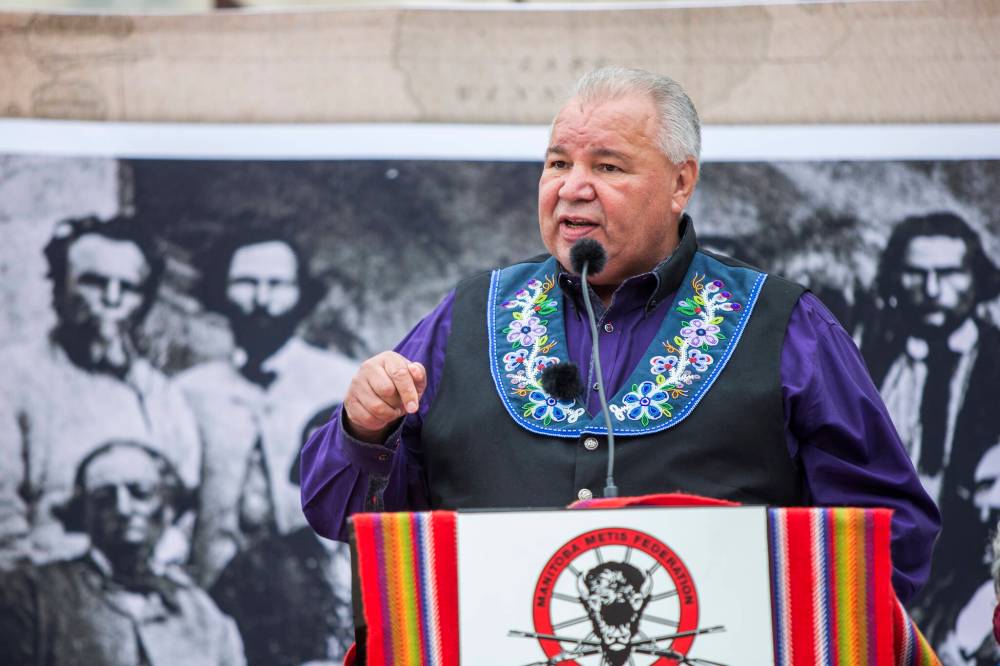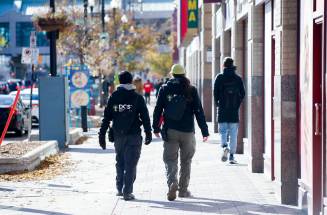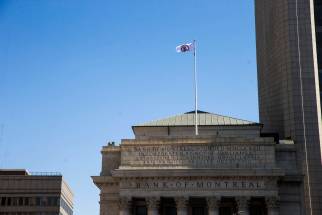Reconciliation taking root in city’s downtown
Read this article for free:
or
Already have an account? Log in here »
To continue reading, please subscribe:
Monthly Digital Subscription
$0 for the first 4 weeks*
- Enjoy unlimited reading on winnipegfreepress.com
- Read the E-Edition, our digital replica newspaper
- Access News Break, our award-winning app
- Play interactive puzzles
*No charge for 4 weeks then price increases to the regular rate of $19.00 plus GST every four weeks. Offer available to new and qualified returning subscribers only. Cancel any time.
Monthly Digital Subscription
$4.75/week*
- Enjoy unlimited reading on winnipegfreepress.com
- Read the E-Edition, our digital replica newspaper
- Access News Break, our award-winning app
- Play interactive puzzles
*Billed as $19 plus GST every four weeks. Cancel any time.
To continue reading, please subscribe:
Add Free Press access to your Brandon Sun subscription for only an additional
$1 for the first 4 weeks*
*Your next subscription payment will increase by $1.00 and you will be charged $16.99 plus GST for four weeks. After four weeks, your payment will increase to $23.99 plus GST every four weeks.
Read unlimited articles for free today:
or
Already have an account? Log in here »
Hey there, time traveller!
This article was published 18/10/2022 (1146 days ago), so information in it may no longer be current.
More than 150 years ago, the people living in the Red River Settlement – mostly French and English-speaking Métis – stood up to Canada and demanded the protection of their property, linguistic and political rights before joining Confederation. They won.
Following an armed uprising and hard-fought negotiations in Ottawa with then-prime minister John A. Macdonald, Manitoba joined Canada in 1870 under terms agreed to by the Red River Métis. Victory was short-lived, however, as many Métis not only found themselves under attack by Euro-Canadians who poured into the new province; the federal government also failed to make good on land and other commitments agreed to under the Manitoba Act.
It has taken generations for the Red River Métis to reclaim the political and other rights they enjoyed prior to joining Canada. However, significant progress has been made, including a landmark Supreme Court of Canada ruling in 2013 that found the federal government did not live up to its commitments to the Métis under the Manitoba Act.
Last weekend, the federal and provincial governments pledged support in the amount of $33.1 million to help establish the Métis National Heritage Centre in the old Bank of Montreal building at the corner of Portage and Main. The centre will showcase Métis history and include artifacts, photo exhibits and workshops.
It will be located just down the street from where Métis leader Louis Riel and his supporters seized Upper Fort Garry from the Hudson’s Bay Company in 1869 and established a provisional government. As Manitoba Métis Federation president David Chartrand pointed out, the centre will also sit on the iconic intersection where two major Red River Cart trails served as the main transport routes during the early settlement years, including the north-south corridor that facilitated robust trade with the United States.
The heritage centre will be a powerful symbol of how far the Red River Métis have come since the struggles their ancestors faced after Manitoba joined Canada. It will also serve as a beacon of hope for the future of the Métis and will contribute to economic growth downtown.
A few blocks west on Portage Avenue, there’s another equally important project that, together with the Métis Heritage Centre, has the potential to change the face of downtown Winnipeg. The former Hudson’s Bay store on Portage Avenue at Memorial Boulevard has been acquired by the Southern Chiefs Organization, representing 34 Anishinaabe and Dakota Nations, and will be transformed into a multi-use facility.
MIKAELA MACKENZIE / WINNIPEG FREE PRESS FILES Manitoba Métis Federation president David Chartrand.
Wehwehneh Bahgahkinahgohn — “It is Visible” — will include affordable-housing units, assisted living for elders, a museum, a child-care centre and health and healing centres.
The dual impact of these centres will be profound. They will foster greater inclusion and offer important educational and other services to the community. Each centre will provide the public with a unique perspective and greater understanding of Métis and First Nations heritage, the impacts of colonialism, how the Manitoba Act and the numbered treaties were negotiated and what they mean today.
They will boost Indigenous pride and provide downtown Winnipeg with a much-needed Métis and First Nations presence. Along with Qaumajuq, the Winnipeg Art Gallery’s new Inuit art centre across the street from the old Bay building that opened last year, downtown Winnipeg will benefit from a trifecta of Indigenous projects that will act as a catalyst of economic and cultural renewal.
It is another example of what reconciliation looks like.










